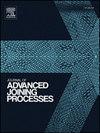Fatigue crack growth and residual stress in simultaneous double-sided friction stir welded aluminum alloy AA6061-T6
IF 3.8
Q2 MATERIALS SCIENCE, MULTIDISCIPLINARY
引用次数: 0
Abstract
Friction stir welding has demonstrated significant efficacy as a solid-state welding methodology for aluminum alloys, including AA6061-T6, and is extensively utilized within automotive and aerospace engineering domains. Nonetheless, conventional FSW methods often lead to uneven residual stress distributions, compromising the material's resistance to fatigue cracking. Simultaneous Double-sided Friction Stir Welding (SDFSW) was introduced to overcome this limitation, offering enhanced welding quality by welding from both sides. This study examines the influence of tool rotational velocity on the fatigue crack growth and the distribution of residual stresses in the SDFSW process applied to AA6061-T6 aluminum. Several rotational velocity combinations were employed to assess their effect on joint quality, encompassing residual stress distribution and cyclic load performance. Based on previous experiments, the SDFSW process uses upper and lower tool speeds. These are 965/965 rpm, 967/1251 rpm and 965/1555 rpm. Fatigue crack growth testing complied with ASTM E647 standards, and the residual stress distribution was assessed through the X-ray diffraction cos α method. Additional mechanical property assessments were performed, including radiographic analysis, examination of the macrostructure and microstructure, microhardness testing, evaluation of tensile strength, and fracture characterization. The findings reveal that the rotational velocity of the tool significantly impacts the weld zone's microstructure, influencing mechanical properties, residual stress distribution, and crack growth behaviors. Among the tested conditions, the tool's rotational speed of 965/1555 rpm yielded the highest tensile strength of approximately 179.82 MPa, representing about 53 % of the strength of the base material and the greatest microhardness of 85 HV. This velocity combination also demonstrated a low fatigue crack growth rate, with Paris law coefficients C and n measured at 2E-08 and 3.6931, respectively, along with a more favorable residual stress distribution.
双面搅拌摩擦焊接铝合金AA6061-T6的疲劳裂纹扩展及残余应力
搅拌摩擦焊作为一种固态焊接方法,在包括AA6061-T6在内的铝合金中表现出了显著的有效性,并广泛应用于汽车和航空航天工程领域。然而,传统的FSW方法通常会导致残余应力分布不均匀,从而影响材料的抗疲劳开裂能力。同时双面搅拌摩擦焊(SDFSW)的引入克服了这一限制,通过从两侧焊接来提高焊接质量。研究了刀具转速对AA6061-T6铝合金SDFSW过程中疲劳裂纹扩展和残余应力分布的影响。采用几种转速组合来评估其对接头质量的影响,包括残余应力分布和循环载荷性能。基于先前的实验,SDFSW工艺使用了上、下刀具速度。这些是965/965 rpm, 967/1251 rpm和965/1555 rpm。疲劳裂纹扩展试验按照ASTM E647标准进行,残余应力分布采用x射线衍射cos α法进行评估。进行了额外的机械性能评估,包括射线照相分析、宏观组织和微观组织检查、显微硬度测试、抗拉强度评估和断裂表征。研究结果表明,刀具的转速显著影响焊缝区显微组织,影响力学性能、残余应力分布和裂纹扩展行为。在测试条件下,工具转速为965/1555 rpm时,最高抗拉强度约为179.82 MPa,约为母材强度的53%,最高显微硬度为85 HV。这种速度组合也表现出较低的疲劳裂纹扩展速率,Paris定律系数C和n分别为2E-08和3.6931,并且残余应力分布更有利。
本文章由计算机程序翻译,如有差异,请以英文原文为准。
求助全文
约1分钟内获得全文
求助全文

 求助内容:
求助内容: 应助结果提醒方式:
应助结果提醒方式:


